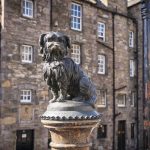Bath is unique. Firstly, because of the Roman Baths. It is the only place in the UK where natural hot springs can be found and every day, over a million litres of water at 46 degrees C flow into the city from the surrounding hills. When the Romans discovered this, Bath gradually became one of their most important settlements on these islands. Secondly, the Roman Baths are rightly praised as some of the best-preserved Roman remains anywhere. This episode tells you all about them: a little history and an idea of what you’ll see when you visit.
what the romans built in bath
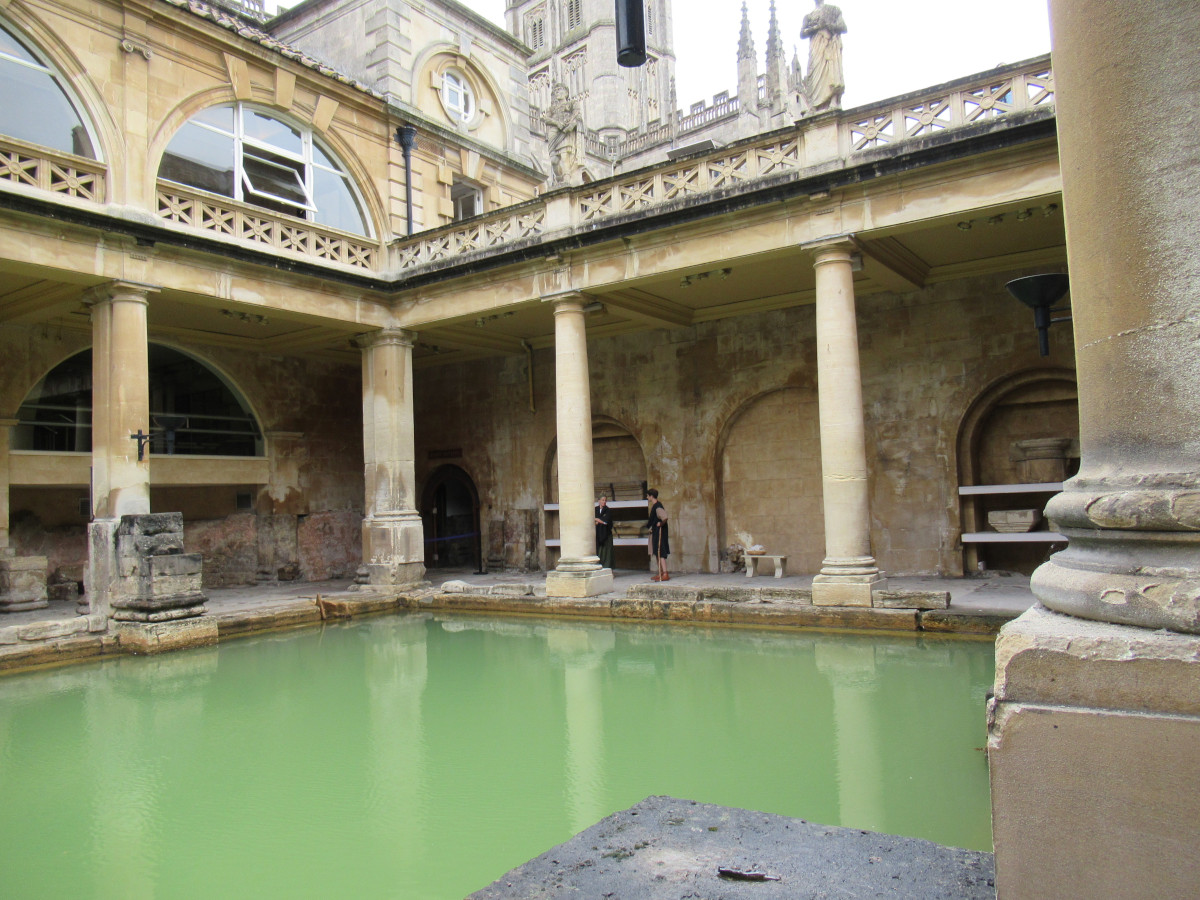
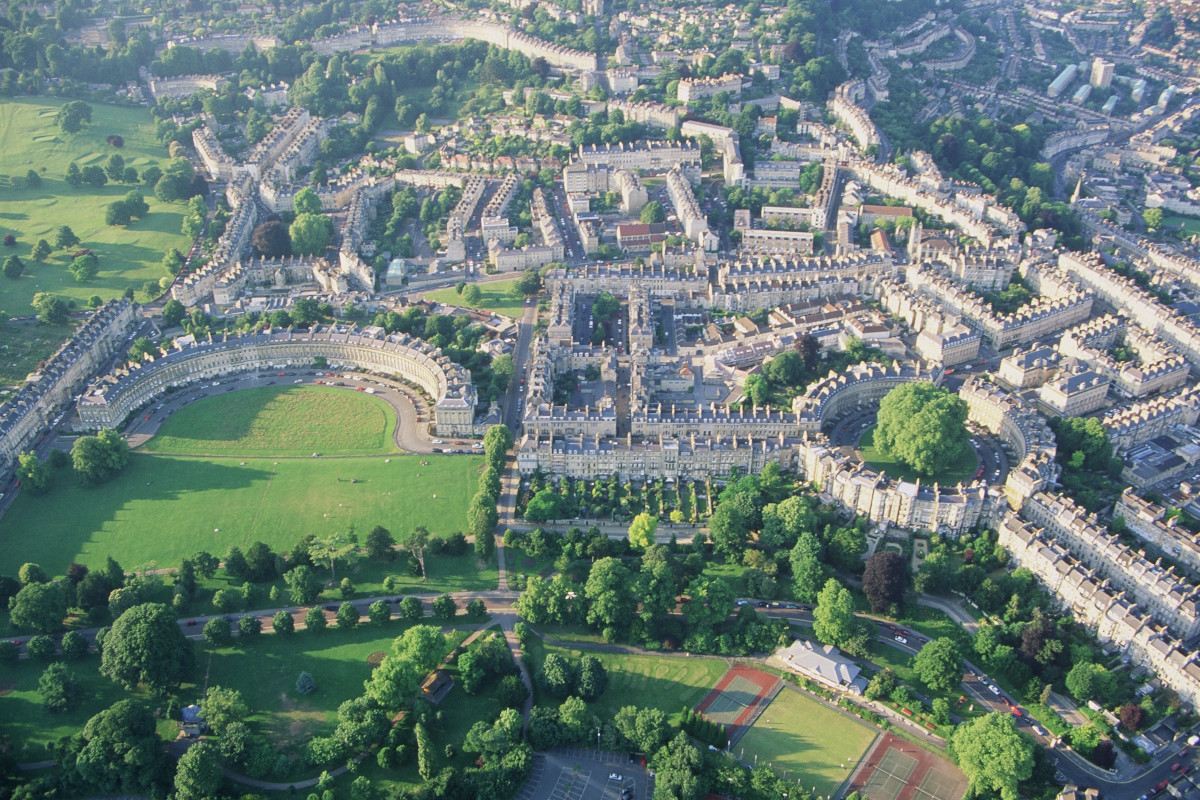
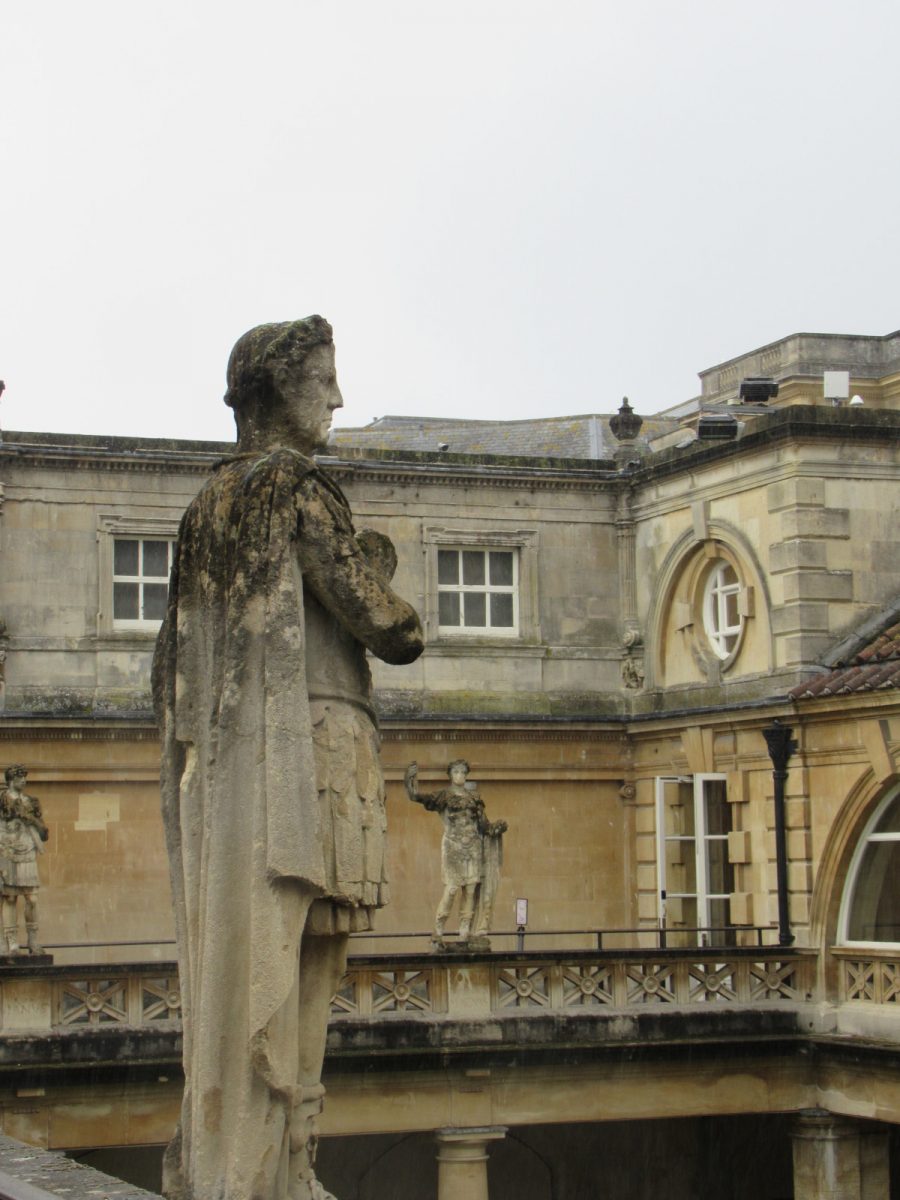
Why here? The Romans arrived in Britain in AD43 and came across this site because two of the main roads they built crossed over here: the Fosse Way, from Exeter to Lincoln, and the main road west from London, now approximately the M4 motorway. It was nicely situated on the River Avon and the lure of the hot springs was irresistible, especially as local tribes told them of the water’s healing properties, and to top it all, the settlement was surrounded by seven hills, just like Rome, so they probably felt an affinity with the landscape.
Building the baths took over 30 years and they were completed in about AD 75. The Romans dug a trench around the main spring in what is now the city centre, surrounded it by a stone wall and then filled it with a lead-lined bath big enough for about 20 people. The settlement grew rapidly, as villas and a marketplace were built and a temple added. The muddy swamp became an elegant spa town, which the Romans tactfully called Aquae Sulis – literally ‘the waters of Sulis’ – after the local goddess. Sulis was the goddess of healing, but gradually she became associated with the Roman goddess of wisdom, Minerva. Today she is sometimes referred to as ‘Sulis Minerva’.
bathing, roman style
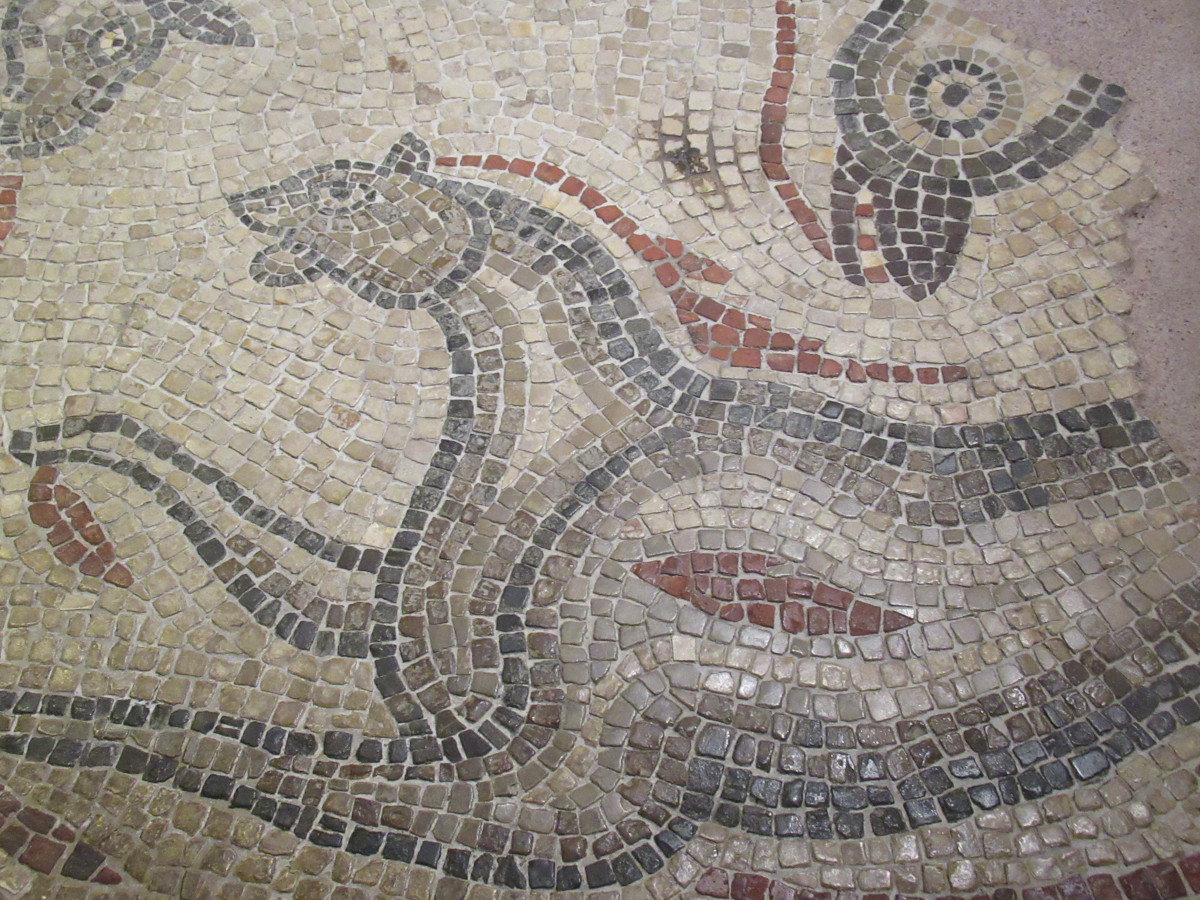
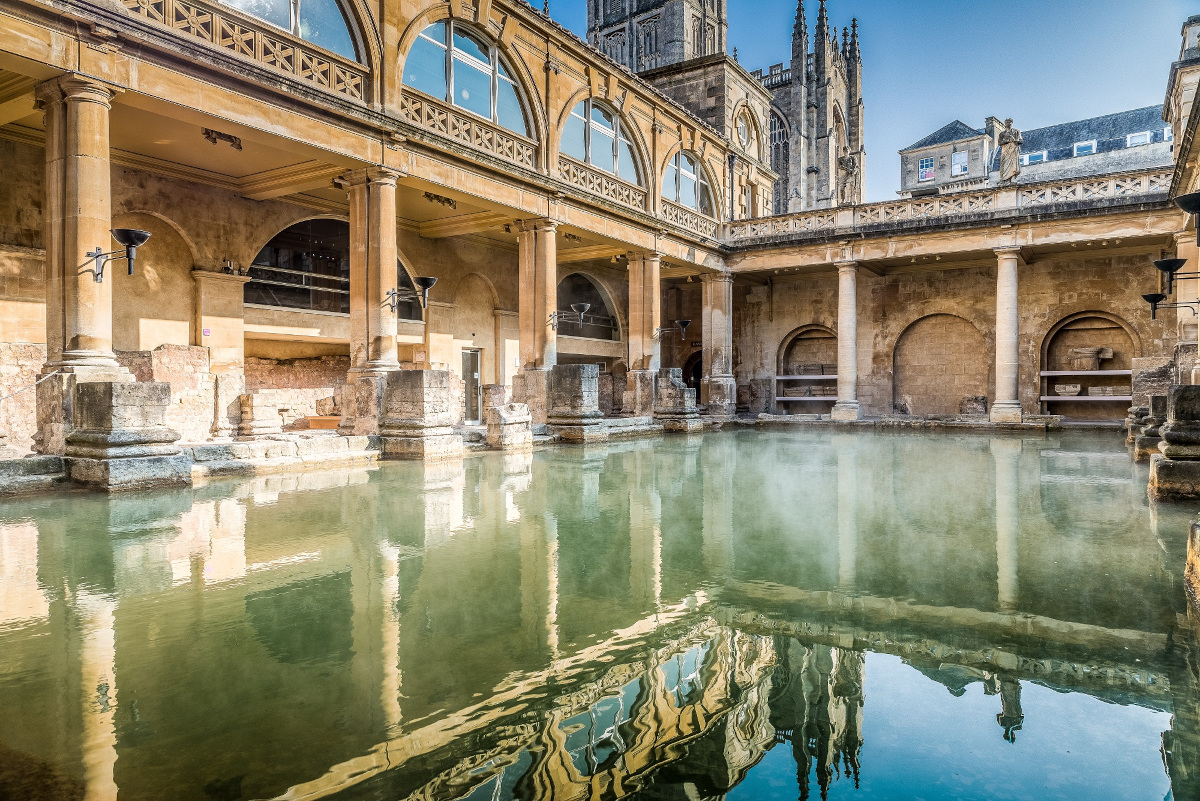
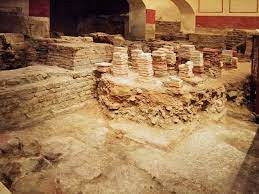
Picture the scene. The Great Bath, which originally had a roof, was connected to a number of other bath houses. There were paved courtyards and the flooring was decorated by mosaics. The walls were plastered and painted in bright, often geometric, patterns and the windows, inside iron frames, were probably glazed. A furnace kept the clever underfloor heating system working when needed. The statues you see around the Great Bath today were in fact added in 1894, so they are far from original, but they do add atmosphere. 3 are of Roman generals and 5 of emperors with connections to Britain, such as Julius Caesar and Hadrian.
A visit to the baths began in the apodyterium, or changing room. Then, maybe after a swim, you would start getting used to the heat by sitting in the tepidarium, where the water was, yes, only tepid, and then you’d move onto the caldarium (think of ‘cald’ as part of ‘scalding’). Sweating would be therapeutic and those who had the means would bring along attendants to massage them with fragrant oils. Eventually it would be time for a quick plunge into the frigidarium where the cold water would serve to rinse the body and close the pores. On some days, perhaps you would use the laconicum, a sort of sauna, instead.
The baths were just the place for other treatments too. That might include the services of a hairdresser and perhaps also a hairplucker who would deal with such problems as underarm hair. The Romans were not fans of the latter. But this was also a meeting place and social hub. People came to do a little business and to network. They also came to relax, meet friends and gossip. Board games were played, food and drink could be procured and there might be entertainment such as a visiting juggler or musician. But bathing was hugely important. One emperor, asked why he bathed every day, replied that unfortunately, he was simply to busy to bathe twice a day.
On leaving the baths, you’d be plunged back in to the busy town, perhaps passing a scribe writing letters or curses for payment, or someone selling religious trinkets or potions and remedies for illnesses. There is much more on the podcast about the daily life of the Romans in Bath, covering such topics as the roles of men and women and the life of slaves.
in the museum

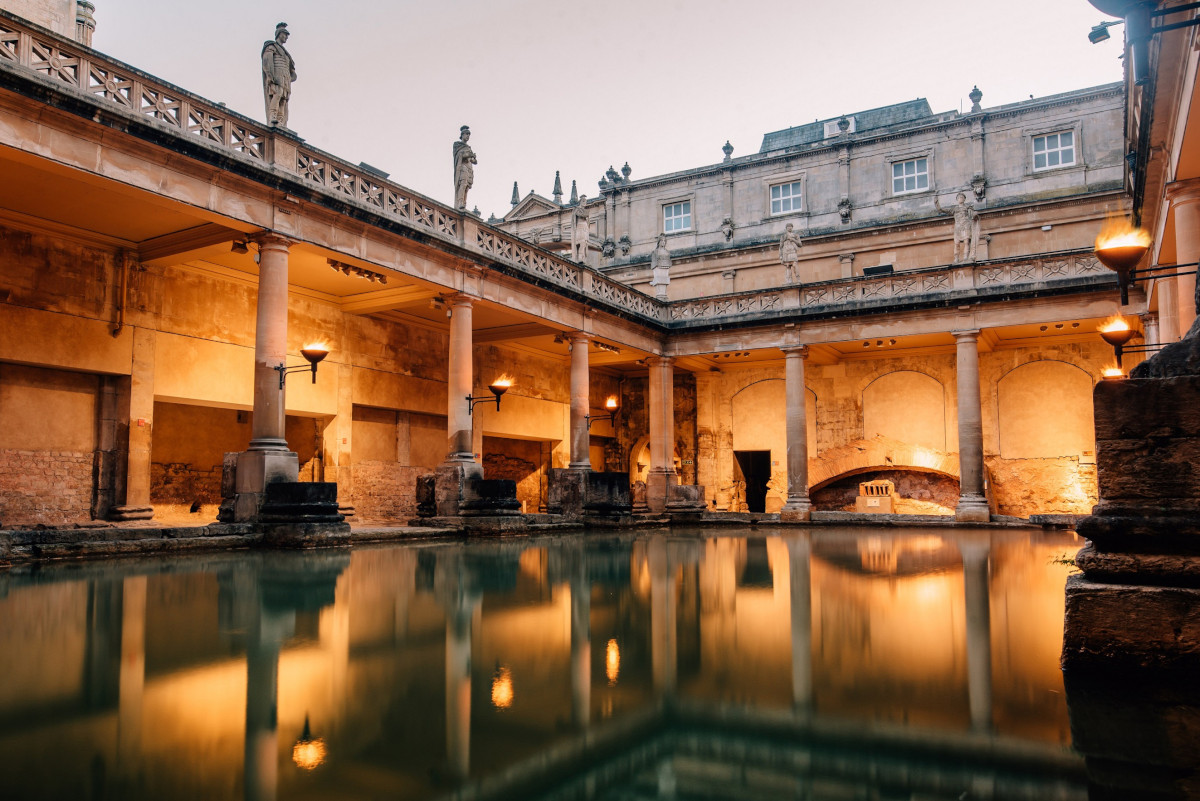
Here you can piece together lots of information about the lives of the Romans in Bath. Sections of mosaic flooring or parts of the original pediments give a fuller picture of what the complex looked like. There are fascinating explanations on how the Romans, the top engineers of their day, made the plumbing work. And there are plenty of everyday objects to help you understand how people lived their lives on this site 2000 years ago. The stand-out piece is surely the head of the statue of Sulis Minerva, unearthed under the streets of Bath in 1727. This haunting gilt-bronze artefact gazes right at you, a reminder of the gods worshipped in Britain before the arrival of Christianity.
There are scraps of text which yield wonderful snippets. A memorial stone to one L Marcius Memor reveals that he was a soothsayer by profession. There are curses, perhaps written out by scribes, to make the victims of crime feel better. One thief, vows the person who has had some clothing stolen, ‘should have maximum death and not be allowed sleep or children now or in the future until he has brought my hooded cloak to the Temple of Divinity.’ And, the thief who made off with a pair of gloves should, says their former owner, ‘go mad and blind.’
To read these texts, indeed to visit the Baths and Museum, is to be transported into the world of the Romans who lived here in Bath – or Aquae Sulis – for three centuries. How did it end? Gradually, barbarians from Northern Europe attacked their villas, burned down their temples and chased them away and Britain fell into the Dark Ages.
Listen to the POdcast
Link for this post
Previous episode Introduction to Bath
Next episode Bath Abbey and Medieval Times
Last Updated on April 9, 2025 by Marian Jones




